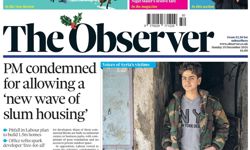It was four years ago, when this magazine was called InCirculation, that I mentioned we were looking at methods of integrating newspaper readership with website usage. It has taken that long to make this happen but now that it has, the regional media landscape has changed forever. Not only that, but for a time, Britain’s regional media publishers are ahead of the game: no other major media have successfully combined these data in the UK or anywhere else. The National Readership Survey is currently looking at consistent and robust methods of media research integration but there’s some way to go before it can follow JICREG to become a dual planning and trading reality.
Many of you will be familiar with JICREG (The Joint Industry Committee for Regional Press Research) which started its innovative (and still unique) readership research currency twenty years ago. It is based on readership data for a thousand local and regional newspapers, some researched and some modelled, and organised within nine thousand postcode sectors. This highly complex system enables advertising planners to do schedules of papers within any geographical area, from a five mile radius of a shop to a county or a television area. One initiative which JICREG undertook several years ago was to add national newspapers by each of these postcode sectors so an agency planner can see what the regional press adds to a national newspaper schedule in any area, and vice-versa. So JICREG has rather more experience of multi-media databases than other media research currencies.
In this increasingly multi-platformed society, the thousand newspapers now have their own websites. So there was an opportunity to show what the websites added to the newspaper coverage. This was a considerable challenge but what was required was the net coverage of adults acquired by using both media.
Working party
Four years ago, the publishers, which own both JICREG and the Newspaper Society, were suffering from generally declining audiences for their printed products and the new fledgling websites introduced not just a new group of consumers but a major opportunity. So, led by Mark Rix then of the Manchester Evening News, a group of publishers representing about 70% of the regional press combined to find a way through this extremely complex technical challenge. These publishers were Trinity Mirror, Johnston Press, Newsquest, Northcliffe Media, Midland News Association, Iliffe News and Media, the Kent Messenger Group and Guardian Media Group. Newspaper readerships and website users had not been linked successfully before in the UK or, for that matter, anywhere else in the world. So it was a venture into the unknown.
The market was hungry for these data. Agencies said typically that ‘clients are increasingly looking for multi-media solutions at a local level’, and ‘regional media owners must ensure accountability to secure their share of online advertising budgets’.
At that time, the digital world was still determining what the acceptable digital audience currency should be (page impressions, unique users, unique browsers...) and we were aware that the wrong choice could undermine not just this project but JICREG itself. So the approach had to be cautious and well considered.
The first stage was to discover what was out there. The Newspaper Society undertook to do this and developed its Media Portfolio Database. This contains the details of the platforms used by its members to disseminate news and advertising. This turned out to be:
1176 print opportunities (newspapers and magazines)
14 radio stations
1268 specialist sections
1 TV station
969 websites
Being an internet-based system, it enables publishers to update their own core information which is useful to agency planners and publishers alike. But as a means to an end it is invaluable.
Measurement issues
Having decided that the priority was to link JICREG readership data with website usage data, it was obvious that there was a need to break new ground. To start with there was no agreed user currency measurement for websites. So one of the first partners for this scheme was ABCe which has been auditing websites for some time. ABCe was able to provide audited figures for page impressions and provide a realistic idea of the traffic at each website but it was unable to give the demographics of the users. This was key to the concept of merging website data with JICREG data and needed by planners for accurate targeting.
Another partner for the Media Portfolio initiative was a company called Survey Interactive which had worked with Trinity Mirror to develop a new methodology for measuring website audiences. Following extensive tests and presentations, Survey Interactive was commissioned by several other publishers to provide researched data for their websites. This meant that there was sufficient information to draw conclusions and to create models for the sites which had not been researched, following the original JICREG design (which has used roughly half researched data and half modelled data for newspapers. This was necessary to provide a comprehensive system).
So the new currency began to come together with website data integrated with audited web traffic using statistical analysis and modelling. This modelling was independently appraised and the results were very positive, acknowledging the considerable ingenuity employed. More modelling was required to determine the duplications between the use of titles and websites. We needed to know who read the papers and also looked at the websites and who did only one of these things. This was also written, tested and, once again, positively appraised.
Along the way, various decisions had to be agreed such as what was to be the equivalent of the readers per copy figure, essential to measuring print readership. After much consultation and discussion this was agreed as Adults per Browser. Another issue was that the websites attracted users from well beyond their natural local geographical boundaries. It became clear that, for example, websites based in towns with strong soccer teams were used regularly by people living far away. So it was agreed, at least initially, to exclude users outside the newspapers / websites business area, in much the same way that JICREG generally excludes readers from beyond a title’s boundaries.
The project could not have taken off without the involvement of key partners including ABCe which initially could only measure the larger websites and had no mechanism to include the many (comparatively) tiny sites at a realistic price. This was resolved by a system of registering all the sites, auditing some of them and modelling the rest. The IPA (the Institute of Practitioners in Advertising, representing the agencies) was involved at every stage to ensure that the system was as accurate as it could be, within reasonable financial constraints, and so it could report to its members that every reasonable precaution had been taken to ensure the data was accurate and valid.
Launch of Locally Connected
In November 2009, the system was launched by the Newspaper Society under the banner ‘Locally Connected’. Data was made available from the JICREG site showing the adult reach for each website and, by using the systems provided by KMR, IMS and Telmar, what the combined adult reach was for each website and its companion newspaper.
Newspaper publishers’ websites are at different stages of development and the extra audiences obtained by adding them to the newspapers’ readerships vary considerably from place to place.
So, having spent four busy years putting this print and online system in place, does it work? Does it make a difference? How many people does it reach?
In Manchester, print product adult reach is 61% and the web audience is 50% and there’s much duplication so the extra reach from web users is 7%.
In Bristol, print product reach is 31% and the web audience increases that to 50%.
In Edinburgh, print product reach is 30% and the web audience is 33%, providing a deduplicated combined reach of 49%.
So a combination of these two media can allow access to considerably wider audiences. The average increase across Great Britain is 14% and this is likely to rise with each update.
And an even more important question is whether the new combined online and print system is going to be used sufficiently to justify its investment.
Advertising agencies are notorious for saying they want something and then, when it’s produced, often after much time, effort and money, fail to use it. After several months, the signs are good. We’ve had some good responses:
“What is particularly exciting is that it’s a tool that will drive up our understanding of our audiences and in particular their newspapers on and off line.” This is from the COI, Britain’s biggest advertiser.
“As an extension of JICREG, the bible for regional planning, Locally Connected will give planners a deeper understanding of the reach of regional titles at a local level. We have never before been able to prove what a campaign will get in terms of reach online.” This is the view of the director of regional media at one of the biggest London agencies.
We’re getting feedback from users and we’re making minor adjustments as the system settles down.
We’re now busy showing people how best to use the data. Not just advertising agencies and national sales houses but local publishing sales forces as well. Regional news and advertising are now available from several platforms and joining print and online data is just a first step to cope with the innovations of new technology. There will be much more to do in the future but we believe we’ve made a significant breakthrough and produced a pragmatic working solution at a time when others are just talking about the problems.
Please do have a look yourself either through the Newspaper Society’s website, www.newspapersoc.org.uk, or through the JICREG site itself.










